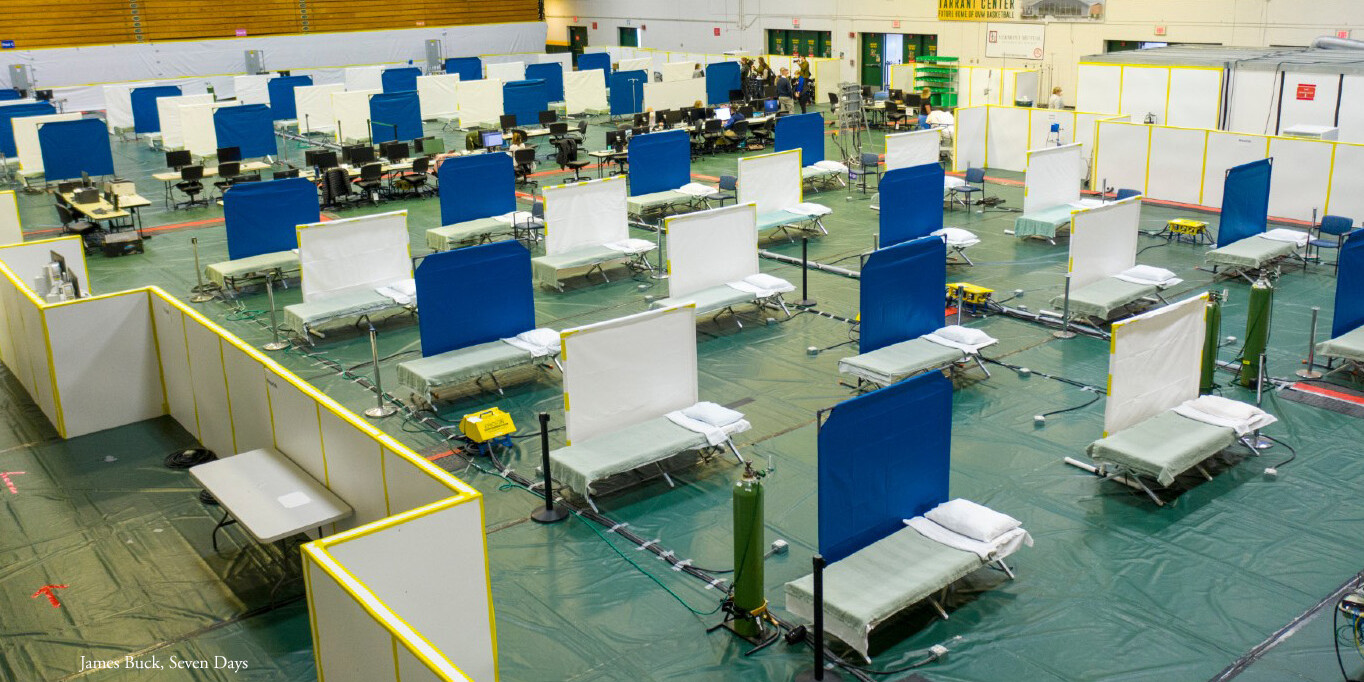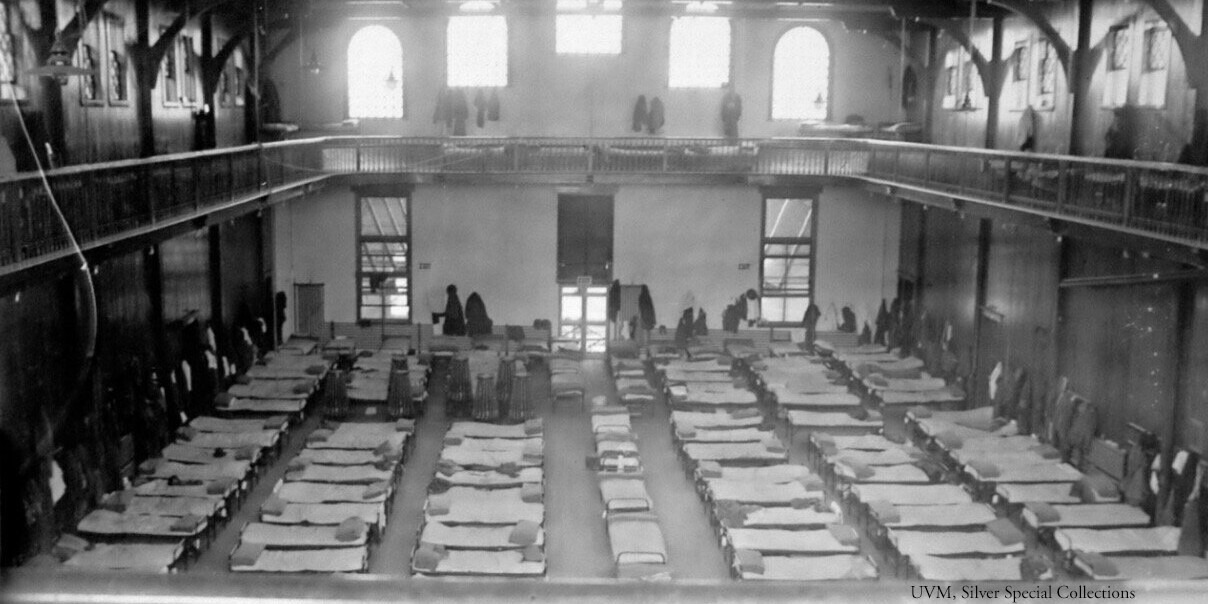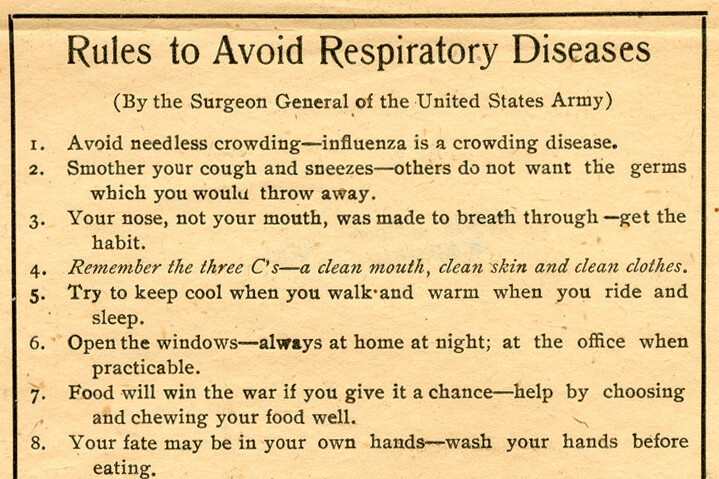Pandemics Then and Now
Does history repeat itself?
In 1918, the Influenza pandemic(a disease that spreads worldwide) spread across the globe. At the time many people called this "Spanish Influenza." The deadly version of the "flu" probably did not start in Spain. Soldiers in World War I helped spread the disease as they moved between countries.
By 1919, the disease made many people sick and killed over 2,000 people in Vermont. Like the COVID-19 pandemic of 2020-2021, the disease spread quickly all over the world.
Historians use primary sources(a historic document that gives first-hand information) like this 1918 poster from Brandon, Vermont, to compare past to present. The rule to wash hands before eating might still be good advice. But other rules might not make sense a century(100 years) later.


Look carefully at these two photographs from the University of Vermont. Both show places to keep sick people if hospitals ran out of room during the pandemics. What is similar in the photographs? What is different?
Thinking About History
Historians ask questions to think deeply about history.
How will you remember the COVID-19 pandemic? What primary sources will future historians use to learn about Vermont in 2020 and 2021?
Learn More
Follow the links below to explore related topics.
Read the article "Awful, Awful": The Spanish Flu in Vermont, 1918-1919 from Historic Roots Magazine.
Explore the COVID-19 archive with primary sources about the pandemic.
Explore the 1918 Influenza Pandemic archive with primary sources about the pandemic.
Copy and paste this citation to show where you did your research.
Vermont Historical Society. "Pandemics Then and Now." Vermont History Explorer. Accessed December 23, 2025. https://blog.vermonthistoryexplorer.org/pandemics-then-and-now
